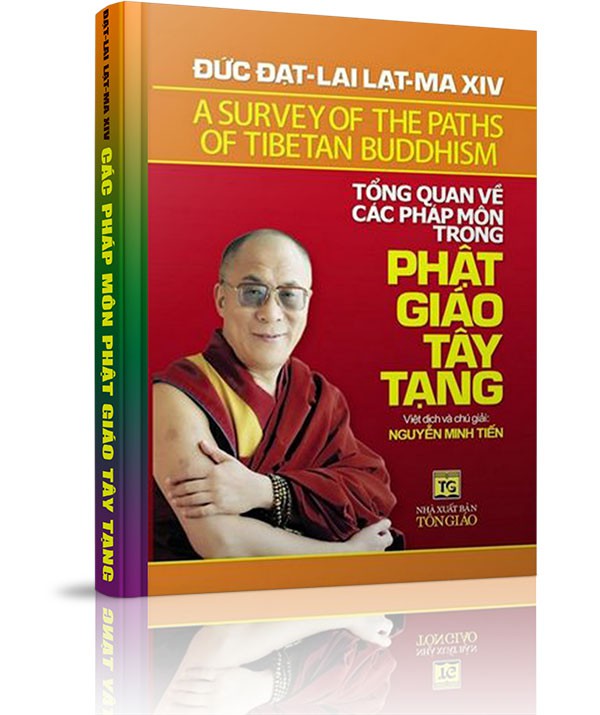From a philosophical point of view, the criterion for distinguishing a school as Buddhist is whether or not it accepts the four seals: that all composite phenomena are impermanent by nature, contaminated phenomena are of the nature of suffering, all phenomena are empty and selfless and nirvana alone is peace. Any system accepting these seals is philosophically a Buddhist school of thought. In the great vehicle schools of thought, selflessness is explained more profoundly, at a deeper level.
Now, let me explain the difference between selflessness as explained in the second turning of the wheel and that explained in the first.
Let us examine our own experience, how we relate to things. For example, when I use this rosary here, I feel it is mine and I have attachment to it. If you examine the attachment you feel for your own possessions, you find there are different levels of attachment. One is the feeling that there is a self-sufficient person existing as a separate entity independent of your own body and mind, which feels that this rosary is 'mine'.
When you are able, through meditation, to perceive the absence of such a self-sufficient person, existing in isolation from your own body and mind, you are able to reduce the strong attachment you feel towards your possessions. But you may also feel that there are still some subtle levels of attachment. Although you may not feel a subjective attachment from your own side in relation to the person, because of the rosary's beautiful appearance, its beautiful colour and so forth, you feel a certain level of attachment to it that a certain objective entity exists out there. So, in the second turning of the wheel, the Buddha taught that selflessness is not confined to the person alone, but that it applies to all phenomena. When you realize this, you will be able to overcome all forms of attachment and delusion.
Just as Chandakirti said in his Supplement to Nagarjuna’s Treatise on the Middle Way', the selflessness explained in the lower schools of tenets, which confine their explanation of selflessness only to the person, is not a complete form of selflessness. Even if you realize that selflessness, you will still have subtle levels of clinging and attachment to external objects, like your possessions and so forth.
Although the view of selflessness is common to all Buddhist schools of thought, there are differences of presentation. That of the higher schools is more profound in comparison with that of the lower schools of thought. One reason is that even though you may have realized the selflessness of persons, as described by the lower schools, in terms of a person not being a self-sufficient or substantially existent entity, you may still cling to a certain misconception of self, apprehending the person as inherently, independently or truly existent.
As realization of the selflessness of persons becomes increasingly subtle, you realize that the person lacks any form of independent nature or inherent existence. Then there is no way you can apprehend a self-sufficient person. Therefore, the presentation of selflessness in the higher schools is much deeper and more profound than that of the lower schools.
The way the higher schools explain selflessness is not only more powerful in counteracting the misconception of the true existence of persons and phenomena, but also does not contradict phenomena's conventional reality. Phenomena do exist on a conventional basis, and the realization of emptiness does not affect this.
The Buddha's different presentations of selflessness should be viewed in order as providing background for the Buddhist view of dependent arising. When Buddhists speak of dependent arising, they do so in terms of afflictive phenomena which are causes of suffering, whose consequences are suffering. This is explained in terms of 'the twelve links of dependent arising', which comprise those factors completed within one cycle of rebirth within the cycle of existence. Therefore, dependent arising is at the root of the Buddhist view.
If you do not understand selflessness in terms of dependent arising, you will not understand selflessness completely. People's mental faculties are different. For some, when it is explained that all phenomena are empty of inherent existence, it may seem that nothing exists at all. Such an understanding is very dangerous and harmful, because it can cause you to fall into the extreme of nihilism. Therefore, Buddha taught selflessness roughly for persons with such mental faculties. For practitioners of higher faculties, he taught selflessness on a subtler level. Still, no matter how subtle the realization of emptiness may be, it does not harm their conviction in phenomena's conventional existence.
So, your understanding of emptiness should complement your understanding of dependent arising, and that understanding of emptiness should further reaffirm your conviction in the law of cause and effect.
If you were to analyze the higher schools' presentation from the viewpoint of the lower schools, you should find no contradiction or logical inconsistencies in them. Whereas, if you were to consider the lower schools' presentation from the viewpoint of the higher schools, you would find many logical inconsistencies.
Kẻ ngốc nghếch truy tìm hạnh phúc ở xa xôi, người khôn ngoan gieo trồng hạnh phúc ngay dưới chân mình. (The foolish man seeks happiness in the distance, the wise grows it under his feet. )James Oppenheim
 Xem Mục lục
Xem Mục lục 
